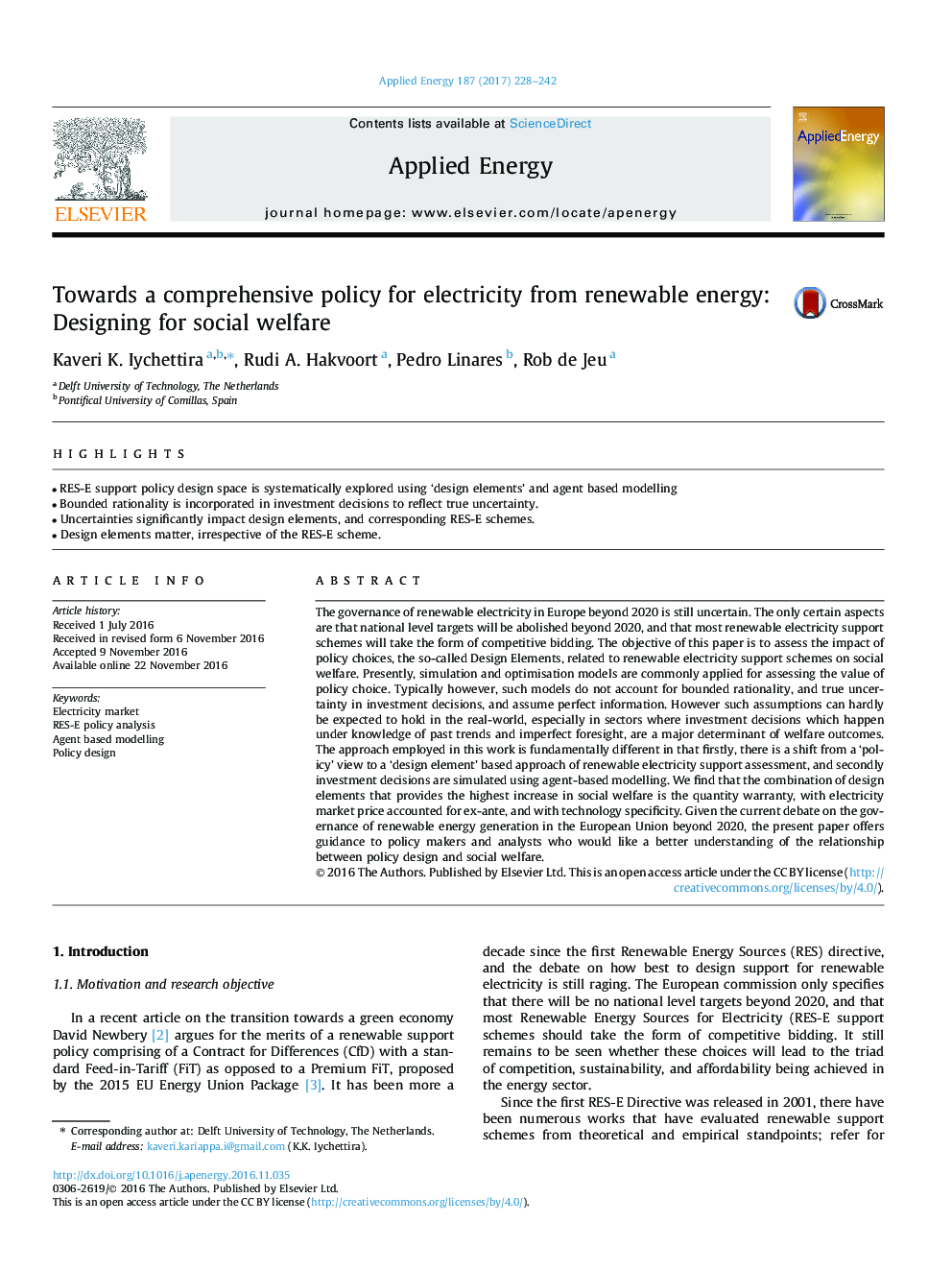| Article ID | Journal | Published Year | Pages | File Type |
|---|---|---|---|---|
| 4916675 | Applied Energy | 2017 | 15 Pages |
â¢RES-E support policy design space is systematically explored using 'design elements' and agent based modellingâ¢Bounded rationality is incorporated in investment decisions to reflect true uncertainty.â¢Uncertainties significantly impact design elements, and corresponding RES-E schemes.â¢Design elements matter, irrespective of the RES-E scheme.
The governance of renewable electricity in Europe beyond 2020 is still uncertain. The only certain aspects are that national level targets will be abolished beyond 2020, and that most renewable electricity support schemes will take the form of competitive bidding. The objective of this paper is to assess the impact of policy choices, the so-called Design Elements, related to renewable electricity support schemes on social welfare. Presently, simulation and optimisation models are commonly applied for assessing the value of policy choice. Typically however, such models do not account for bounded rationality, and true uncertainty in investment decisions, and assume perfect information. However such assumptions can hardly be expected to hold in the real-world, especially in sectors where investment decisions which happen under knowledge of past trends and imperfect foresight, are a major determinant of welfare outcomes. The approach employed in this work is fundamentally different in that firstly, there is a shift from a 'policy' view to a 'design element' based approach of renewable electricity support assessment, and secondly investment decisions are simulated using agent-based modelling. We find that the combination of design elements that provides the highest increase in social welfare is the quantity warranty, with electricity market price accounted for ex-ante, and with technology specificity. Given the current debate on the governance of renewable energy generation in the European Union beyond 2020, the present paper offers guidance to policy makers and analysts who would like a better understanding of the relationship between policy design and social welfare.
